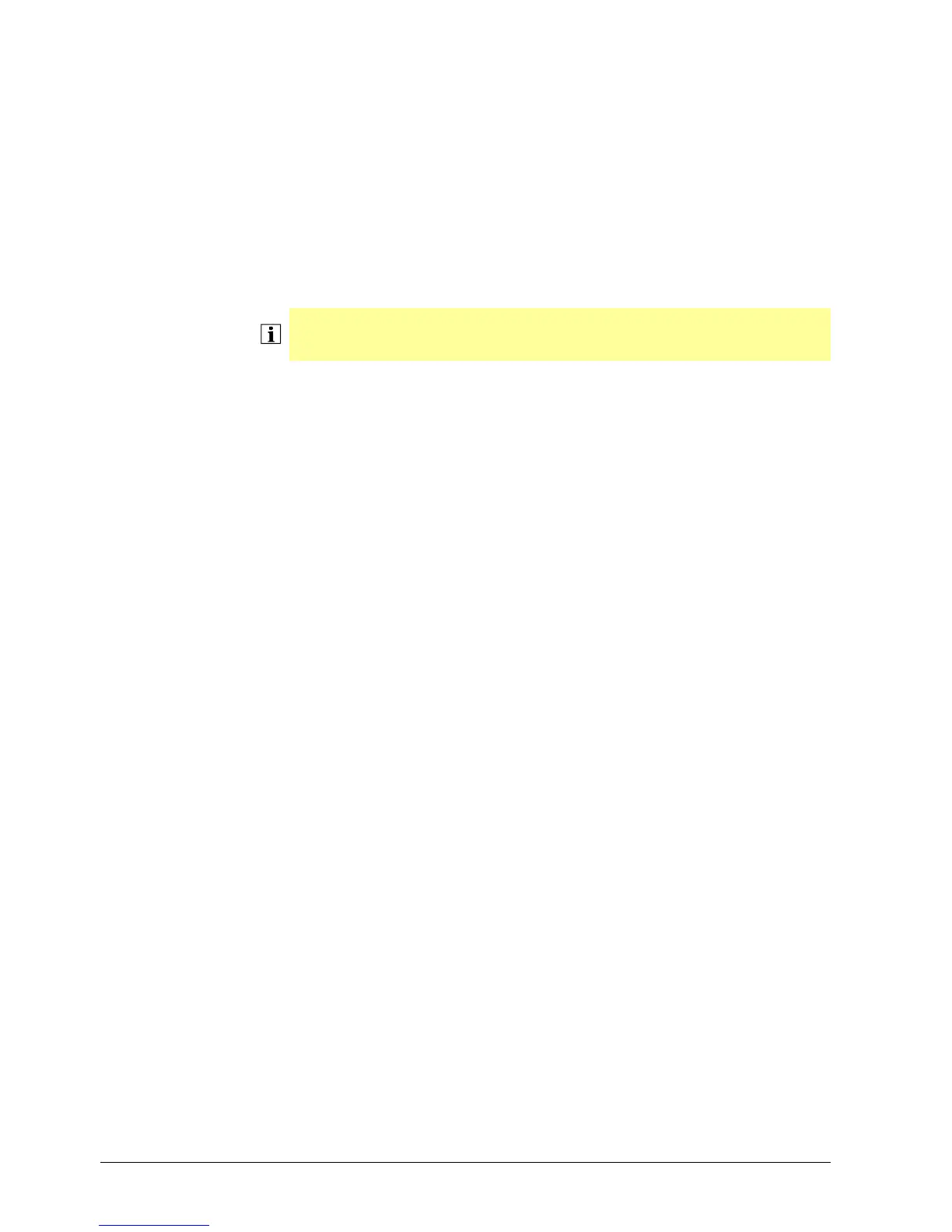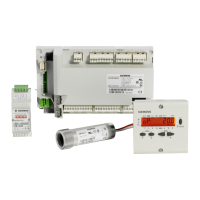146/617
Building Technologies Division User Manual LMS14... CC1U7471en
6 The settings in detail 07.05.2014
Flow temperature setpoint according to the heating curve
In the case of a weather-compensated flow temperature setpoint (fixed value not
parameterized), the setpoint is calculated based on the outside sensor and the heating
curve.
When the room thermostat is in the Cold state, the heating is switched on according to
the current heating level, irrespective of operating mode.
Functions Boost heating, Quick setback and Optimum start/stop control are taken into
consideration.
Without room sensor, the room model is used.
Functions Room temperature limitation and Room influence can be provided only if a
room sensor is connected.
Note!
If an outside sensor is not connected, the heating curve is calculated based on the
backup outside temperature of 0 °C.
Adaption with flow temperature setpoint according to the heating curve
If the flow temperature setpoint is calculated via the heating curve (no fixed value
parameterized) and the room thermostat’s Adaption function is active, the heating
curve’s slope and thus the flow temperature setpoint will be adapted.
Adaption takes place at midnight (like with the normal heating curve adaption with room
sensor).
To ensure adaption, neither a room sensor nor an outside sensor is mandatory.
Adaption at midnight
Based on the demand for heat of the previous day, adaption of the heating curve
readjusts the slope.
The adapted slope is stored and used should a power failure occur.
For adaption, a cold-warm time ratio of the room thermostat is predefined as a target
value (1…99%).
If, during Comfort phases, the cold phase is too long, the heating curve slope is
increased.
If the cold phase is too short, the heating curve slope is decreased.
The duration of boost heating – if parameterized – is not taken into account for the cold-
warm time ratio.
Dynamic readjustment during the Comfort phases
With the weather-compensated flow temperature setpoint, dynamic readjustment of the
setpoint is not required.
In that case, the heat request is continuously matched to varying conditions in
accordance with the composite outside temperature.
Adaption can be deactivated (---).
